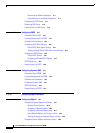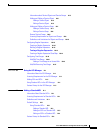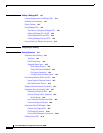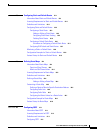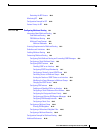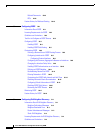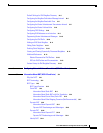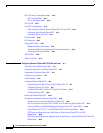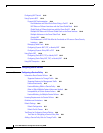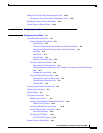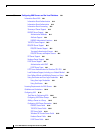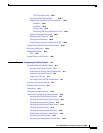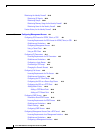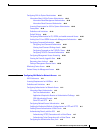
Contents
xxvi
Cisco ASA 5500 Series Configuration Guide using ASDM
NAT in Routed and Transparent Mode 32-12
NAT in Routed Mode 32-13
NAT in Transparent Mode 32-13
NAT for VPN 32-14
How NAT is Implemented 32-16
Main Differences Between Network Object NAT and Twice NAT 32-16
Information About Network Object NAT 32-17
Information About Twice NAT 32-17
NAT Rule Order 32-20
NAT Interfaces 32-21
Routing NAT Packets 32-21
Mapped Addresses and Routing 32-22
Transparent Mode Routing Requirements for Remote Networks 32-24
Determining the Egress Interface 32-24
DNS and NAT 32-24
Where to Go Next 32-27
CHAPTER
33 Configuring Network Object NAT (ASA 8.3 and Later) 33-1
Information About Network Object NAT 33-1
Licensing Requirements for Network Object NAT 33-2
Prerequisites for Network Object NAT 33-2
Guidelines and Limitations 33-2
Default Settings 33-3
Configuring Network Object NAT 33-3
Configuring Dynamic NAT or Dynamic PAT Using a PAT Pool 33-4
Configuring Dynamic PAT (Hide) 33-8
Configuring Static NAT or Static NAT-with-Port-Translation 33-11
Configuring Identity NAT 33-15
Monitoring Network Object NAT 33-18
Configuration Examples for Network Object NAT 33-19
Providing Access to an Inside Web Server (Static NAT) 33-19
NAT for Inside Hosts (Dynamic NAT) and NAT for an Outside Web Server (Static NAT) 33-21
Inside Load Balancer with Multiple Mapped Addresses (Static NAT, One-to-Many) 33-26
Single Address for FTP, HTTP, and SMTP (Static NAT-with-Port-Translation) 33-30
DNS Server on Mapped Interface, Web Server on Real Interface (Static NAT with DNS
Modification)
33-33
DNS Server and Web Server on Mapped Interface, Web Server is Translated (Static NAT with DNS
Modification)
33-36



